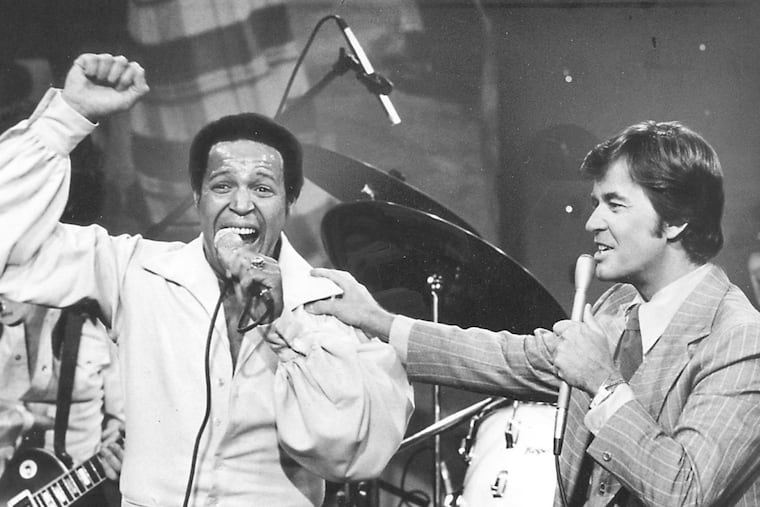60 years ago, Philly's 'Bandstand' went national
Bandstand first aired on Philadelphia's WFIL on Oct. 13, 1952. Philly teens came in droves. It was timed perfectly for high schoolers making their way to WFIL's studio on 46th and Market Street immediately after class let out.

"Live from Philadelphia, it's time for America's favorite dance party, American Bandstand."
Thus Dick Clark's popular weekday program would commence.
Responsible for introducing the nation's youth to scores of rock-and-roll icons and popular dances, American Bandstand had its first nationwide broadcast 60 years ago on Aug. 5, 1957, in Philadelphia.
The show emerged from a media industry undergoing dramatic changes in the 1940s and '50s, and would give Philly youth an outsized influence on the trajectory of popular American culture.
After World War II, television broadcasting became cheaper and its quality improved. As consumers turned their attention to TV, advertisers followed suit. Radio broadcasters tightened their budgets. Live radio orchestras gave way to disc jockeys playing prerecorded music.
Beginning in the mid-1940s, many radio stations began broadcasting upbeat rhythm-and-blues records that teens were listening to on jukeboxes. Some of these featured live studio audiences that danced to the music played on air, such as WPEN Philadelphia's 950 Club.
While television was swallowing up radio's ad revenue, it was also emulating radio's programming. Soap operas made the transition from radio to TV. One local station in Philly adopted the disc jockey model as well.
Bandstand — as the program was initially known — first aired on Philadelphia's WFIL on Oct. 13, 1952. It was the first of its kind. Broadcast locally and hosted by disc jockey Bob Horn, the show featured Philly youth dancing along to the latest hit songs lip-synched by up-and-coming stars.
Teens came in droves. Airing at 3:30 p.m., the show was timed perfectly for high schoolers making their way to WFIL's studio on 46th and Market Street immediately after class let out.
Horn was axed in 1956 after a drunken-driving arrest. A young, gregarious disc jockey named Dick Clark took over. Without missing a beat, Bandstand's popularity continued to grow. After just one year at the helm, Clark persuaded ABC executives to pick up the show, which transformed into American Bandstand to reflect its new national profile.
In 1957, the show reached 20 million viewers daily. One year later, that number doubled to 40 million, nearly a quarter of the U.S. population.
American Bandstand struck a chord with young people who possessed greater spending power than previous generations. When teens on the show approved of a new 45, it sold well. Buddy Holly, Frankie Avalon, Fabian, and Bobby Rydell all made notable appearances, benefiting from Bandstand's cultural cachet. Philadelphia's own Chubby Checker — who would later eulogize Dick Clark as the "king of the deejays" — turned kids on to "The Twist" through the program.
Young viewers copied the fashions of their favorite teen couples dancing on air. One Philly-specific outfit fans sought to emulate involved a blouse with a distinctive round collar worn underneath a sweater. The shirt was actually a common uniform from nearby Catholic schools. Girls wore sweaters on top because the nuns at their schools disapproved of their institutions' insignia appearing on such a decadent TV show.
The program was unable to keep up its remarkable popularity. In 1962, ABC cut Bandstand to 30 minutes and began pretaping the coming week's episodes on Saturdays, all but depleting its spontaneous character.
A year later, Clark took the show to California, where it would continue until 1989.
Patrick Glennon is a communications officer at the Historical Society of Pennsylvania. pglennon@hsp.org